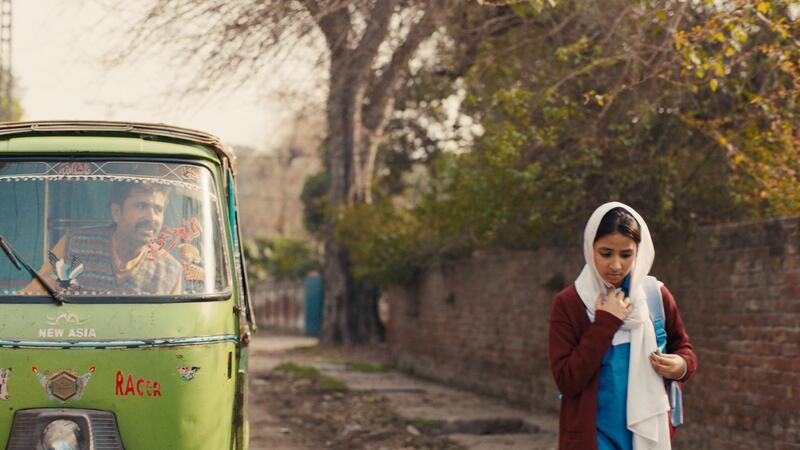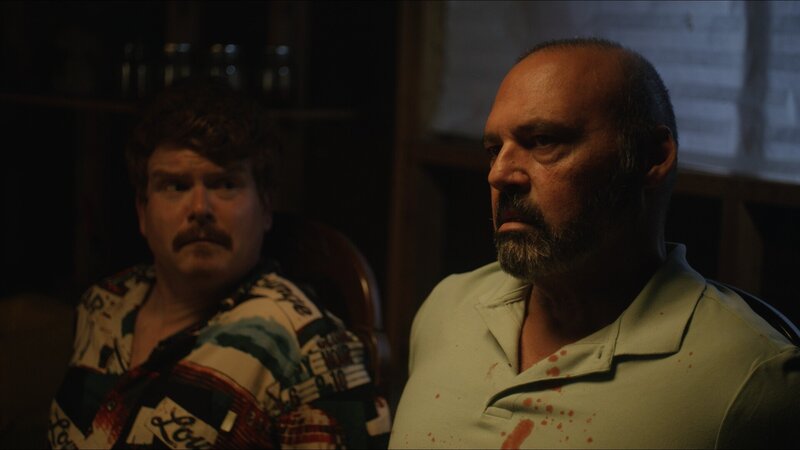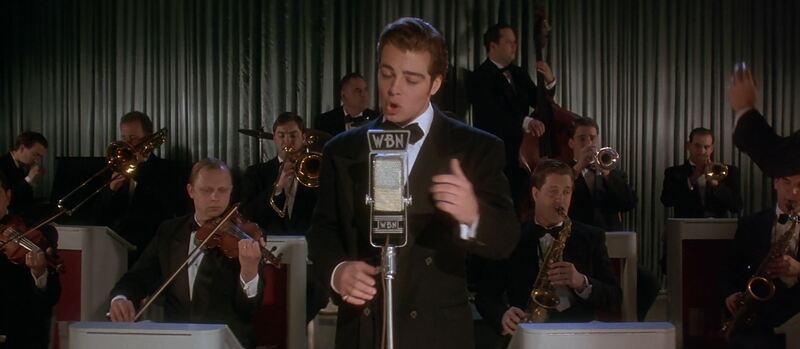
Fear Told Through a Child’s Unblinking Eyes
MOVIE REVIEW
Don’t be late, Myra
–
Genre: Drama, Thriller, Short
Year Released: 2024, 2025
Runtime: 15m
Director(s): Afia Nathaniel
Writer(s): Afia Nathaniel
Cast: Innayah Umer, Nida Ahsan, Mushtaq Ahmed, Munir Hussain, Rizwan Riaz
Where to Watch: shown at the 2025 San Jose International Film Festival
RAVING REVIEW: DON’T BE LATE, MYRA is on the screen for just fifteen minutes, but its impact stays with you long after the credits fade. Writer-director Afia Nathaniel crafts a taut and devastating short that captures the everyday terror faced by girls navigating unsafe worlds, turning a single missed school bus into a microcosm of society's failure. It’s a small film with enormous weight, balancing tension and empathy with precision and purpose.
At its heart is Myra, a ten-year-old girl whose missing ride forces her into a perilous walk through the tangled streets of Lahore, Pakistan. Played with realism by Innayah Umer, Myra is a character who barely speaks yet conveys volumes through glances, hesitations, and the subtle tightening of fear in her posture. Nathaniel’s camera follows her on Myra’s level—never leering, never exploitative—offering a perspective that feels both intimate and suffocating. The audience sees the world as she does: menacing, indifferent, and inescapable.
Nathaniel’s direction is rooted in restraint. Rather than relying on overt shocks, she allows dread to accumulate through observation. Each sound—a motorcycle slowing down, a whisper from an unseen corner, footsteps that seem to match her pace—becomes a threat. The result is a slow, methodical tightening of tension, one that mirrors the way real fear creeps up rather than crashes in. It’s a masterclass in control, turning the streets of Lahore into a character of their own—alive, chaotic, and predatory.
The genius of DON’T BE LATE, MYRA lies in what it doesn’t show. The surface tension of her walk home is only half the story—the real terror lingers in what’s waiting behind closed doors. Nathaniel lets the audience sense it rather than see it, layering an unspoken dread that transcends physical danger. Every glance over Myra’s shoulder, every pause at the sound of a man’s voice, carries a different kind of fear—the one that doesn’t end when she reaches home. It’s here that the film’s true horror emerges: a child burdened with secrets too heavy for anyone to bear, navigating a world that refuses to protect her.
That subtle revelation reshapes the entire experience. What first feels like a tale of survival becomes something far more complex—a portrait of endurance, silence, and entrapment. The weight of responsibility resting on Myra’s shoulders is suffocating, but it’s presented with such sensitivity that the audience feels her reality without needing it spoken aloud. Nathaniel’s choice to imply rather than expose turns the short into a devastating study of what it means to grow up too soon. It’s not a twist; it’s a reckoning.
What elevates the film beyond the suspense is the personal history behind it. Nathaniel, herself a survivor of assault, transforms trauma into art without sensationalizing it. That personal connection infuses every frame with authenticity. DON’T BE LATE, MYRA isn’t just about fear; it’s about resilience, silence, and the cultural taboos that keep such violence unspoken. Nathaniel’s choice to center a child’s experience makes the commentary even more powerful, showing how early in life the awareness of danger begins, particularly for girls in patriarchal societies.
The film’s sound design deserves special mention. There’s no score manipulating the audience’s emotions—just the unrelenting drone of Lahore itself. The city’s ambient noise fills the space like a living entity. Every detail amplifies Myra’s isolation, contrasting her against the sprawling, uncaring world around her. It’s both immersive and unnerving.
Visually, the film is stunning in its simplicity. The color palette mirrors Myra’s emotional state—sunlit warmth gradually giving way to shadow as her journey becomes increasingly treacherous. Nathaniel avoids indulgence, instead focusing on grounded realism. The handheld camerawork maintains a human and fragile perspective, and the editing is unflinching, allowing moments of discomfort to linger just long enough to force the audience to confront them.
The supporting cast functions as extensions of the city’s menace rather than traditional characters. Each face Myra encounters—whether a bystander, a vendor—feels loaded with possibility, and that ambiguity keeps the viewer on edge. Nathaniel resists the temptation to define villains; instead, she depicts an environment that allows predation to thrive through complicity and inaction.
Every moment feels purposeful, with no excess or filler. In fifteen minutes, it delivers the emotional intensity that many features take two hours to achieve. Its pacing mirrors panic—measured at first, then spiraling into helpless acceleration. Yet even at its most frightening, the film avoids spectacle. There’s no catharsis, no easy resolution, only the lingering question of what will happen the next time Myra misses her bus.
The depth of the film also lies in its universality. Though deeply rooted in Lahore, its message extends far beyond Pakistan. It’s about the global experience of young girls navigating spaces not designed for their safety, and the collective apathy that enables predators to exist unchallenged. Nathaniel captures that truth with empathy and precision, ensuring the film never feels exploitative or hopeless.
As a short film, it accomplishes nearly everything it sets out to do. It’s precise, emotionally devastating, and thematically fearless. The film avoids moralizing or lecturing; instead, it trusts the viewer to feel the tension and draw their own conclusions. That trust pays off. The ending lands not as closure, but as an indictment—a mirror held up to those who look away.
It’s an emotional gut punch—one that provokes, unsettles, and demands to be remembered. In fifteen minutes, DON’T BE LATE, MYRA achieves something that the world of film often attempts and yet struggles to convey: it tells the truth, and refuses to let us look away.
Please visit https://linktr.ee/overlyhonestr for more reviews.
You can follow me on Letterboxd, Instagram, Twitter, and YouTube. My social media accounts can also be found on most platforms by searching for 'Overly Honest Reviews'.
I’m always happy to hear from my readers; please don't hesitate to say hello or send me any questions about movies.
[photo courtesy of TRYANGLE PRODUCTIONS, ZAMBEEL FILMS]
DISCLAIMER:
At Overly Honest Movie Reviews, we value honesty and transparency. Occasionally, we receive complimentary items for review, including DVDs, Blu-rays, CDs, Vinyl Records, Books, and more. We assure you that these arrangements do not influence our reviews, as we are committed to providing unbiased and sincere evaluations. We aim to help you make informed entertainment choices regardless of our relationship with distributors or producers.
Amazon Affiliate Links:
Additionally, this site contains Amazon affiliate links. If you purchase through these links, we may receive a commission. This affiliate arrangement does not affect our commitment to honest reviews and helps support our site. We appreciate your trust and support in navigating these links.



Average Rating